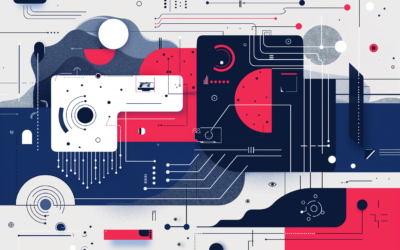Artificial intelligence has huge potential to help people with disabilities. But the tech needs to be designed thoughtfully, not tacked on later. AI should empower everyone, not just the able-bodied.
AI Opens Doors
Emerging tech like speech recognition and computer vision gives people with disabilities new ways to use machines. Think voice commands, image descriptions, and translating sign language. Small stuff that makes daily life way easier.
There are over 1 billion people with disabilities out there. Vision issues. Hearing loss. Mobility limitations. You name it. For them, artificial intelligence is a game changer. It removes barriers and closes the gap.
However, the data used to train it can be biased. Some groups need to be included in the progress. Therefore, the tech community needs to step up and build artificial intelligence to work for all people.
Design for Real People
Too often, accessibility feels like an afterthought tacked onto products later. That ends up excluding people with disabilities. Not cool.
Instead, companies need to put accessibility first. Get input from real disabled users from the very beginning of designing AI. Pro tip: their lived experience is invaluable.
Artificial intelligence builders see what needs improving by working closely with differently abled testers and researchers throughout. The goal is tech that feels welcoming to all, not just the non-disabled.
In summary, AI should empower regular people in their daily lives. Keep it human-centered.
Teach AI Right
Training data is what artificial intelligence learns from. But a lot of it has biases baked in. Too white, male, Western, and able-bodied. That skews the tech.
If the data doesn’t reflect diverse users, AI works better for some groups than others. Not inclusive.
Therefore, companies need to get more voices in there. Collaborate with the disability community when collecting images, text, and audio. Whatever data is required.
Additionally, keep tweaking the data to make AI fair for everyone. Get feedback from disabled users. They’re the real experts on what needs fixing.
AI Superpowers
Here are some ways we can upgrade life with AI:
Talk to Tech
Voice assistants like Siri, Alexa, and Google Home are huge for people who are blind or have mobility issues. They can take voice commands instead of using their hands.
See by Hearing
AI can generate text descriptions for images to make visual stuff accessible. Huge for the internet, social media, and shopping sites.
Listen Up
Automated captions and sign language translation mean videos, meetings, and events are accessible for deaf folks.
Writing Wings
AI writing tools help people with learning disabilities by improving their messages. Less effort, better communication.
Digital Sidekicks
Animated AI avatars create a friendly face for folks with cognitive disabilities. They interact using speech, emojis, and gestures.
A Lifeline Out There
For people with vision issues, AI navigation guides describe their surroundings and give directions. Computer vision for the win.
And that’s just the start. AI can tear down barriers across education, jobs, healthcare, transit, and entertainment. The future looks accessible.
Making AI for Humans
Companies have the power to shape AI for good. Here are tips:
- Hire staffers focused just on accessibility. Set concrete goals.
- Write guidelines on designing inclusive AI systems.
- Train AI teams on disability issues and accessibility. It matters.
- Bring disabled people on board to test and give input. Pay them fairly for their time.
- Check AI works with disability tech like screen readers. Plan for it.
- Think holistically. How do people set up, use, and troubleshoot the tech?
- Regularly check for AI bias. Update data and models to help more kinds of users.
Bottom line? Build AI that respects human dignity and independence. Tech should empower people.
AI Biases
AI has huge potential to help people with disabilities live independently. Moreover, emerging technologies like speech recognition and computer vision can make daily tasks easier for disabled users. However, there are potential problems with AI biases excluding or harming disabled users. Specifically, many AI systems exhibit biases due to unfair, incomplete training data. For example, speech recognition often struggles with speech impairment users because the training data lacks speech patterns of disabled individuals. Similarly, computer vision can fail at identifying wheelchair users if not exposed to enough images during development. To create truly inclusive AI, companies must proactively identify and reduce biases. They can accomplish this goal by improving training data diversity, testing inclusively, and updating models based on feedback from diverse users. Addressing biases is crucial for building AI systems that empower all people equitably.
AI Accessibility Guidelines
To ensure accessibility becomes integral to the AI design process, companies should establish clear guidelines and best practices for product teams to follow. Comprehensive AI accessibility guidelines should provide detailed recommendations on topics like inclusive data collection, accessible interface design, compatibility with assistive technologies, user testing with disabled individuals, and ongoing model updates to mitigate algorithmic bias. Additionally, guidelines can draw inspiration from resources like the Web Content Accessibility Guidelines (WCAG) to inform standards for the responsible and ethical development of inclusive AI systems. Just as web accessibility standards empower equal access to information online, thoughtful AI accessibility guidelines can help catalyze industry-wide change in ensuring emerging technologies enable users with disabilities.
An Accessible Future
AI tech is evolving fast. Companies are starting to make accessibility a priority in their AI products. But there’s a long way to go.
The path will only sometimes be smooth. Biased data and lack of awareness around disability issues are big pitfalls. But we can learn and improve.
If designed thoughtfully, AI can unlock potential and transform lives. A more accessible world is possible. Are you ready to build it?

